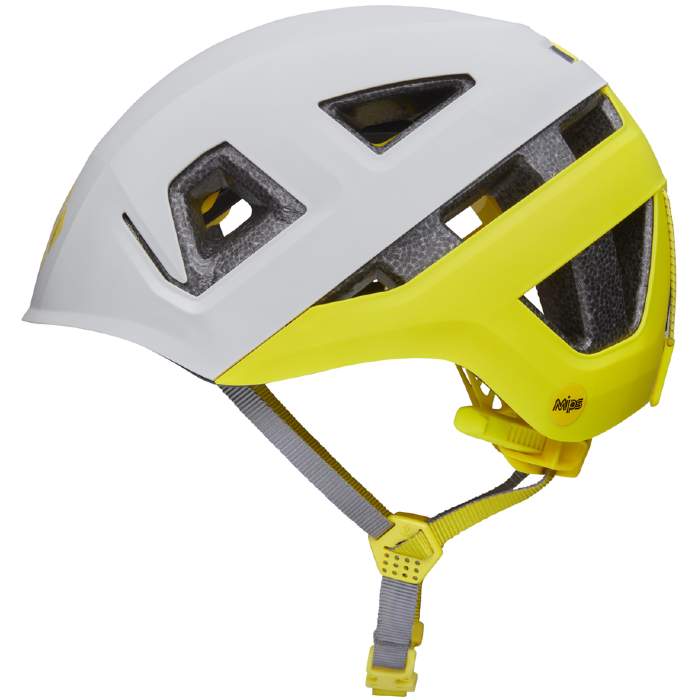How to use Black Diamond Helmets, inspection, warnings, care and maintenence with instructional pictures.
Capitan MIPS Kid
Description
- MIPS Technology for added protection against the rotational motion transmitted to the brain from angled impacts to the head
- Dual-certified for both climbing and cycling
- Sticker pack included for fun custom decals
- Dual Density EPS + 2-piece ABS shell combo creates ultra-durability
- Increased side and back protection
- Low-profile suspension system
- Integrated headlamp clips
- Removable velcro pads
- MIPS Technology for added protection against the rotational motion transmitted to the brain from angled impacts to the head
- Dual-certified for both climbing and cycling
- Sticker pack included for fun custom decals
- Dual Density EPS + 2-piece ABS shell combo creates ultra-durability
- Increased side and back protection
- Low-profile suspension system
- Integrated headlamp...
Retail price
When you click a link below and then checkout online, no matter what you buy (climbing gear or not), we get a small commission that helps us keep this site up-to-date. Thanks!
Weight (g)  | 383 g One size: 383 g / 13.5 oz |
Gender  |
Kids |
Size Range  | 19.30 in - 22.50 in One size: 49-55 cm / 19.3-22.5 in |
Features  |
Bike Cert (EN 1078) MIPS technology |
Quick Adjust  |
No |
Vents  |
Yes |
Headlamp Compatable  |
Yes |
Face Shield Compatable  |
No |
| Certification | CE, EN, UIAA |
No reviews yet.
A pictoral representation of the UIAA-106 and EN-12492 standards for helmets.
The UIAA equipment standard provides a baseline for equipment performance in a test lab under controlled conditions on new equipment. Although these test conditions are relevant to the conditions encountered climbing, conditions encountered at the crags and the condition of the equipment are equally important. This recommendation from the UIAA member federation The British Mountaineering Council (BMC) provides vital equipment information that is NOT explicitly addressed in the standard, particularly failure modes of the equipment and recommendations for the use, inspection, maintenance, and retirement of equipment.

















